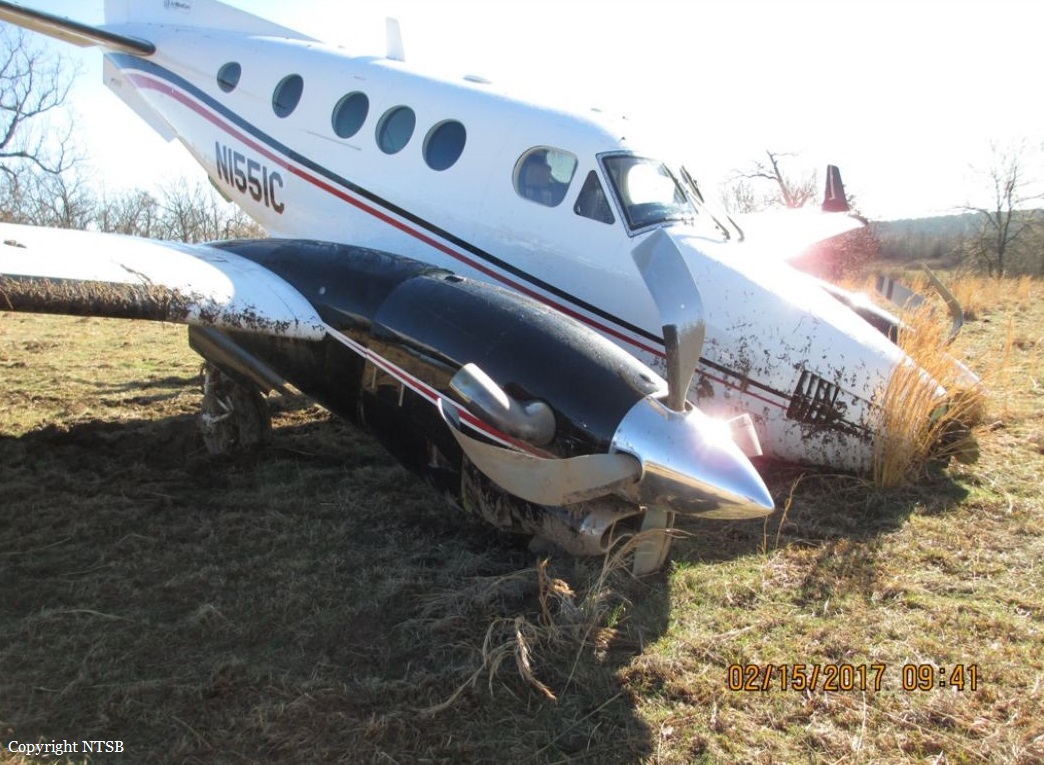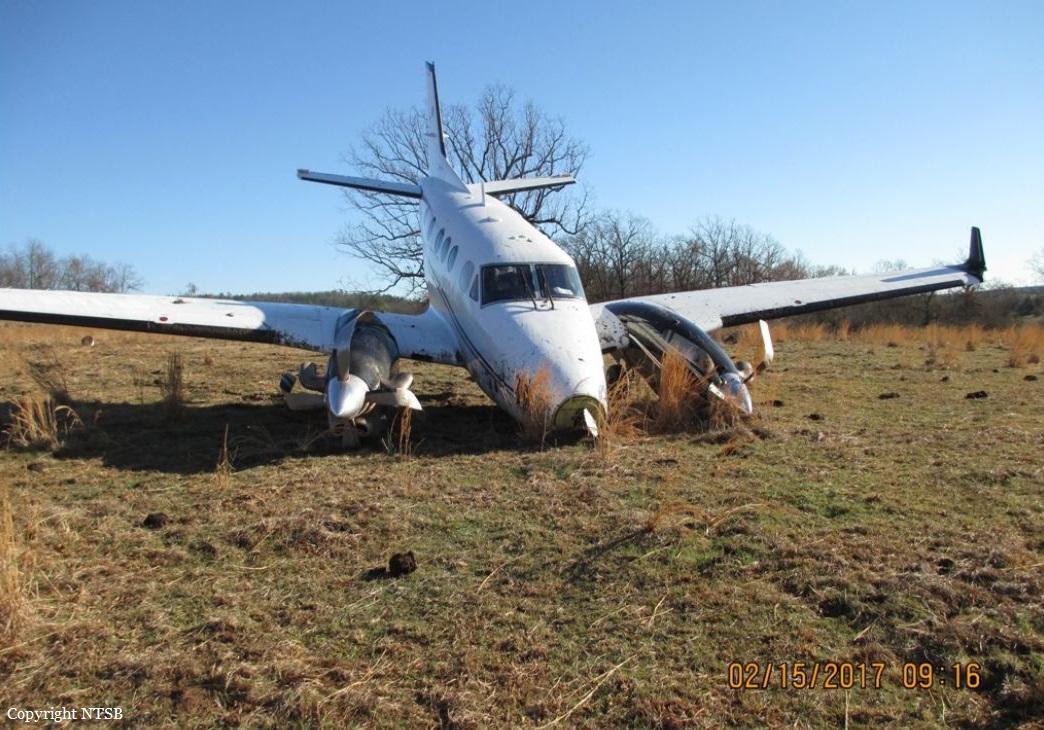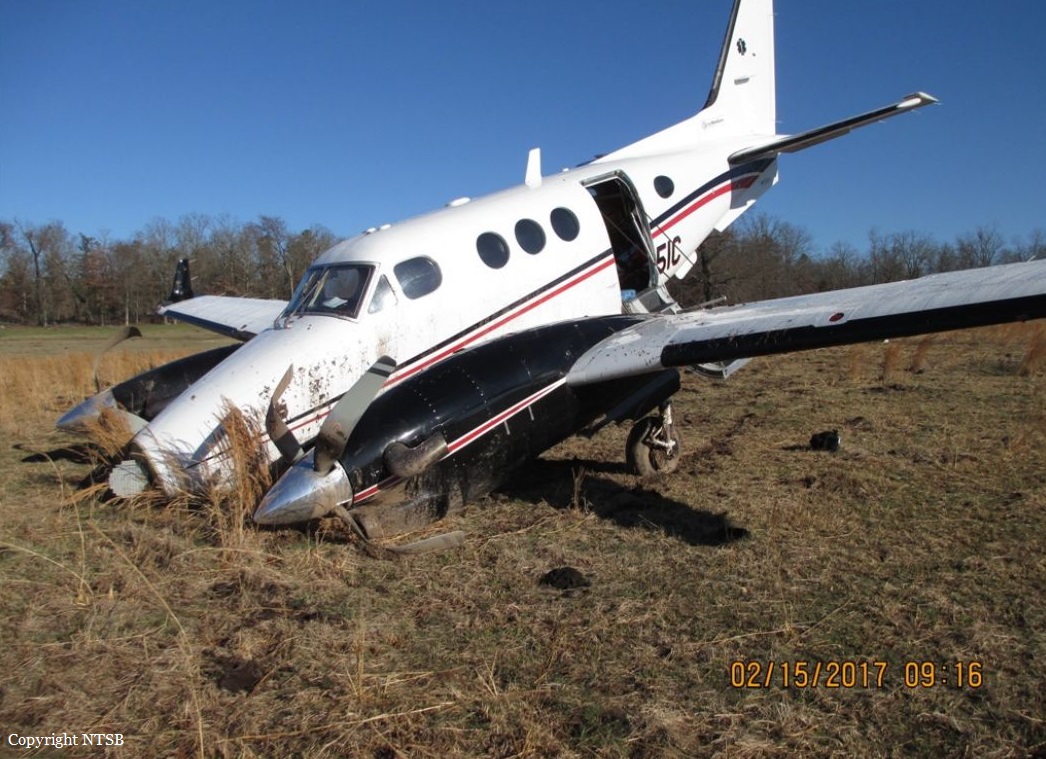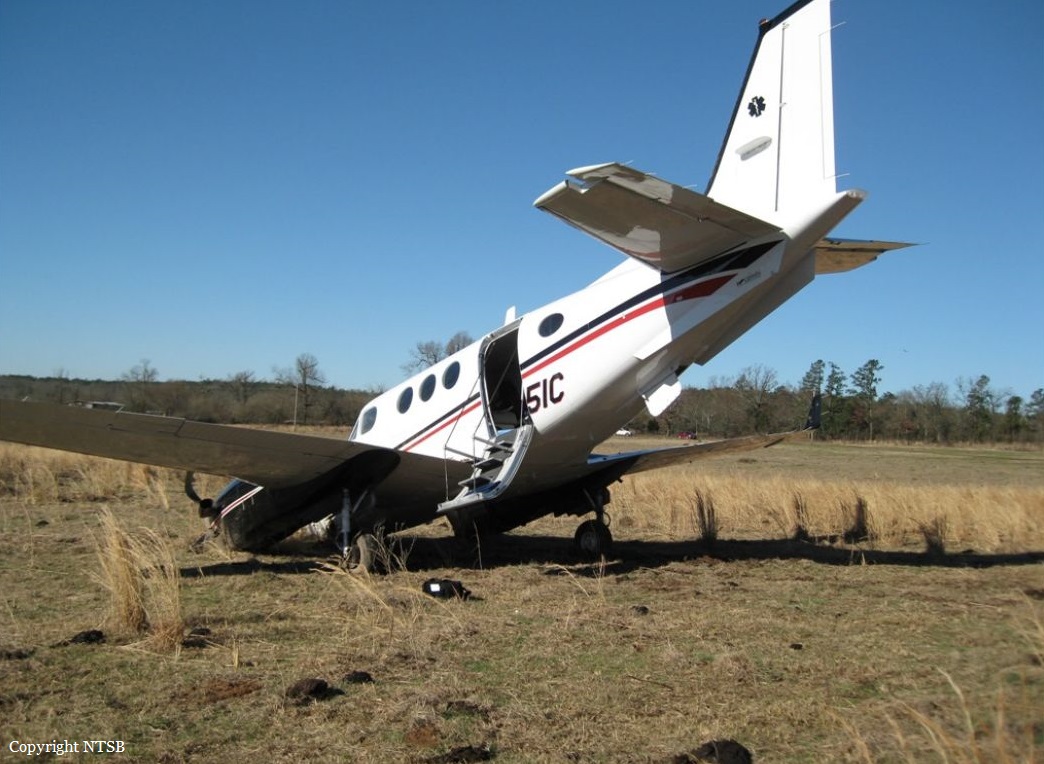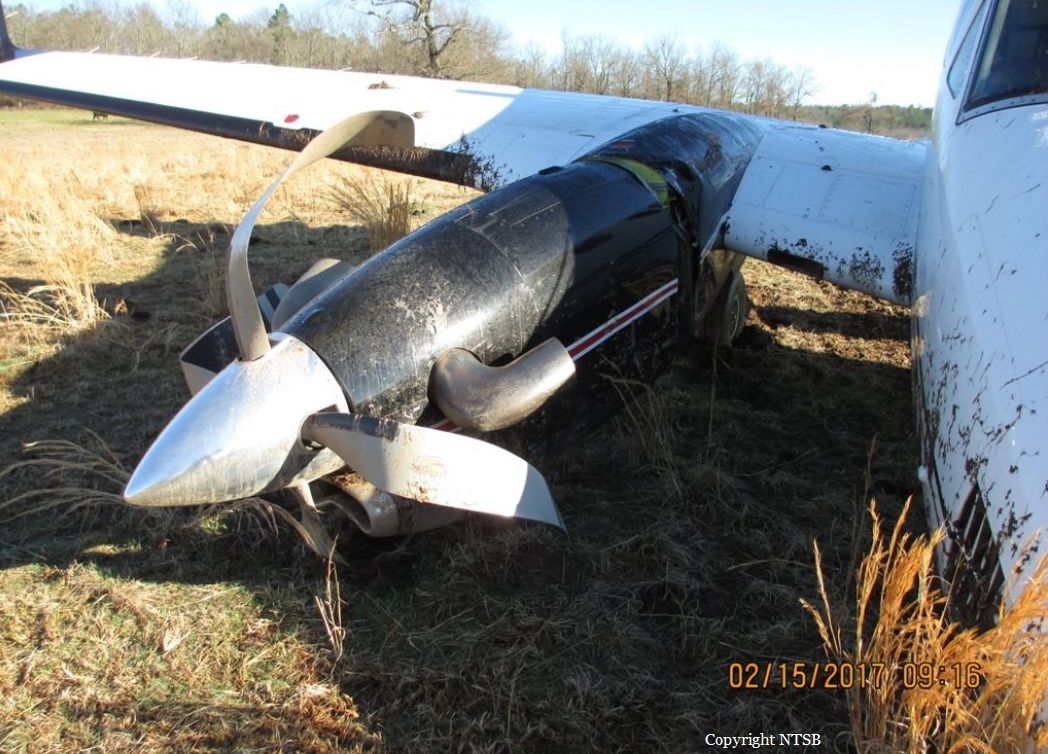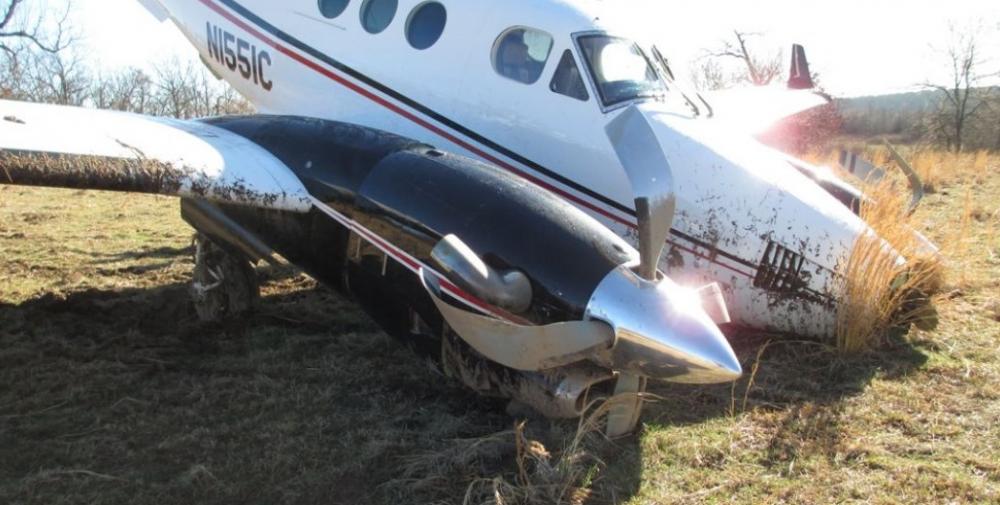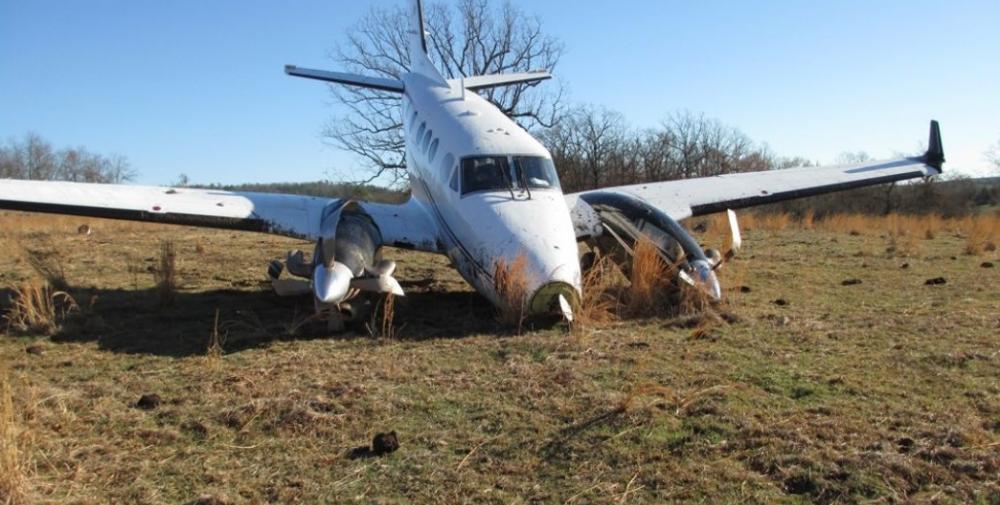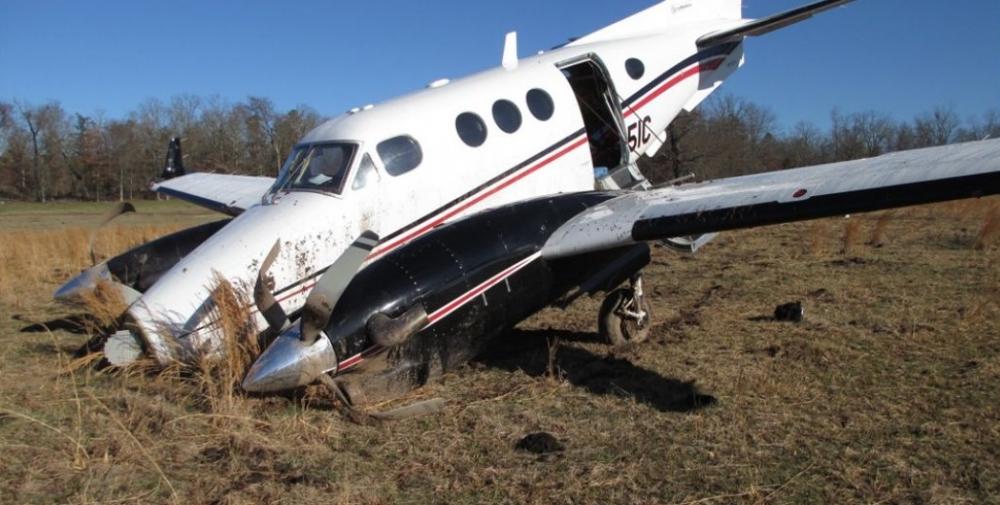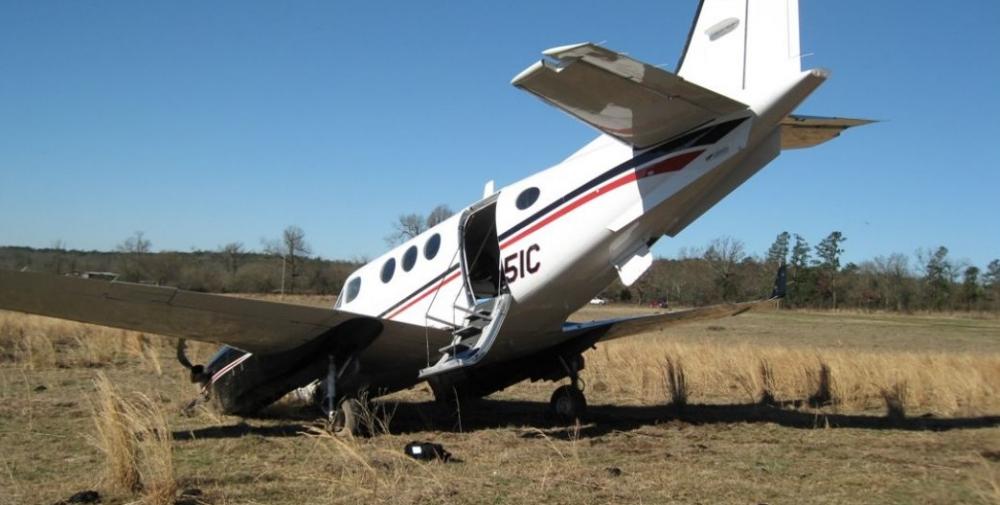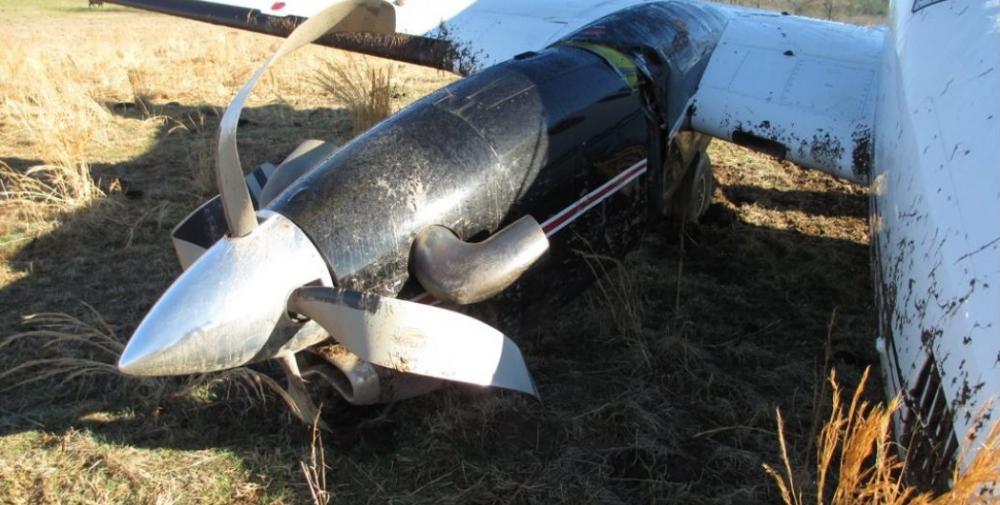Date & Time:
Feb 14, 2017 at 1145 LT
Type of aircraft:
Beechcraft 90 King Air
Registration:
N1551C
Flight Phase:
Flight
Flight Type:
Ambulance
Survivors:
Yes
Site:
Plain, Valley
Schedule:
McAlester – Idabel
MSN:
LJ-1365
YOM:
1994
Country:
United States of America
Region:
North America
Crew on board:
1
Crew fatalities:
0
Pax on board:
2
Pax fatalities:
0
Other fatalities:
0
Total fatalities:
0
Captain / Total hours on type:
400
Aircraft flight hours:
7862
Circumstances:
The pilot stated that the engine start and airplane power-up were normal for the air medical flight with two medical crewmembers. The engine ice vanes were lowered (as required for ground operations) and then were subsequently raised before takeoff. Takeoff and climbout were routine, and the pilot leveled off the airplane at the assigned cruise altitude. The air traffic controller informed the pilot of heavy showers near the destination airport, and the pilot "put the ice vanes down." The pilot indicated that, shortly afterward, the airplane experienced two "quick" electrical power fluctuations in which "everything went away and then came back," and "[s]econds later the entire [electrical] system failed." Due to the associated loss of navigation capability while operating in instrument meteorological conditions (IMC), the pilot set a general course for better weather conditions based on information from his preflight weather briefing. While the pilot attempted to find a suitable hole in the clouds to descend through under visual conditions, the left engine lost power. The pilot ultimately located a field through the cloud cover and executed a single-engine off-airport landing, which resulted in substantial damage to the right engine mount and firewall. A postaccident examination of the airplane and systems did not reveal any anomalies consistent with an in-flight electrical system malfunction. The three-position ignition and engine start/starter-only switches were in the ON position, and the engine anti-ice switches were in the ON position. When the airplane battery was initially checked during the examination, the voltmeter indicated 10.7 volts (normal voltage is 12 volts); the battery was charged and appeared to function normally thereafter. The loss of electrical power was likely initiated by the pilot inadvertently selecting the engine start switches instead of the engine anti-ice (ice vane) switches. This resulted in the starter/generators changing to starter operation and taking the generator function offline. Airplane electrical power was then being supplied solely by the battery, which caused it to deplete and led to a subsequent loss of electrical power to the airplane. A postaccident examination revealed that neither wing fuel tank contained any visible fuel. The left nacelle fuel tank did not contain any visible fuel, and the right nacelle fuel tank appeared to contain about 1 quart of fuel. The lack of fuel onboard at the time of the accident is consistent with a loss of engine power due to fuel exhaustion. This was a result of the extended flight time as the pilot attempted to exit instrument conditions after the loss of electrical power to locate a suitable airport. Further, the operator reported that 253 gallons (1,720 lbs) of fuel were on board at takeoff, and the accident flight duration was 3.65 hours. At maximum range power, the expected fuel consumption was about 406 lbs/hour, resulting in an endurance of about 4.2 hours. Thus, the pilot did not have the adequate fuel reserves required for flying in IMC. Both the pilot and medical crewmembers described a lack of communication and coordination among crewmembers as the emergency transpired. This resulted in multiple course adjustments that hindered the pilot's ability to locate visual meteorological conditions before the left engine fuel supply was exhausted.
Probable cause:
The loss of electrical power due to the pilot's inadvertent selection of the engine start switches and the subsequent fuel exhaustion to the left engine as the pilot attempted to locate visual meteorological conditions. Contributing to the accident were the pilot's failure to ensure adequate fuel reserves on board for the flight in instrument meteorological conditions and the miscommunication between the pilot and medical crewmembers.
Final Report:
N1551C.pdf136.73 KB
